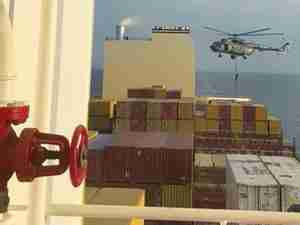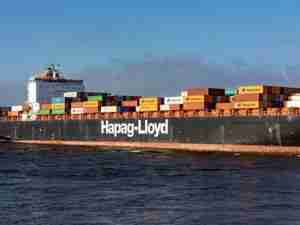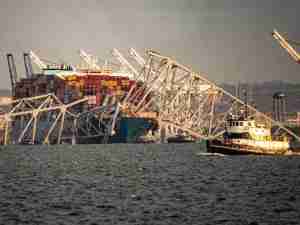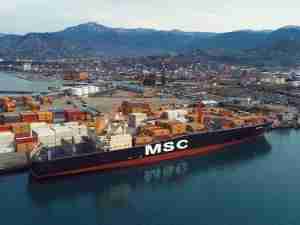With diminishing prospects for receipt of federal funds, Southern California officials are continuing to look more seriously at other means - such as a fee imposed on shippers for each imported container - to help alleviate transportation bottlenecks.
"It's going to be hell getting there, but it's got to be done," Norm King, executive director of the San Bernardino Associated Governments and Transportation Commission (SANBAG), said about the possibility of implementation of a container fee to pay for such improvements as billions of dollars worth of projects to separate rail and roadway traffic in Southern California.
King was among participants in a combined event - the fourth annual Inland Empire Transportation and Logistics Summit and the seventh annual State of the Inland Empire - that drew some 600 people to the National Orange Show Events Center in San Bernardino, CA on Sept. 23.
Noting the insufficient level of federal interest and involvement in Southern California transportation issues, King said that there was "maybe one" federal government official among the 600 attendees.
Patty Senecal, vice president of Transport Express Inc., a Rancho Dominguez, CA-based trucking, warehousing and distribution firm, commented that hurricane disaster relief efforts and the war in Iraq may be expected to consume such substantial federal sums that hopes for paying for Southern California transportation infrastructure needs must be directed somewhere other than Washington.
"I don't see a whole lot of funding from the federal government," Senecal said. "It's time for self help.
"User fees are probably going to be in the future here," she added.
Indeed, user fees already are being utilized to help retire debt on the $2.4 billion Alameda Corridor, the 20-mile-long rail cargo expressway linking the ports of Los Angeles and Long Beach to the transcontinental rail network near downtown Los Angeles. Railroads pay for each unit moved along the corridor, which opened in 2002, bearing toll fees such as $15 per 20-foot-equivalent container unit (TEU) in exchange for speed and efficiency.
SANBAG's King cited a recent Southern California Association of Governments study that concluded that new container fees to pay for grade separations beyond the Alameda Corridor would have to reach $200 per container before shippers would balk, resulting in a significant diversion of cargo from the Los Angeles and Long Beach ports.
King said he believes the ideal solution would be a voluntary business agreement, as opposed to a government mandate.
The cost for some 120 currently unfunded grade separations to replace existing rail crossings is estimated between $3 billion and $4 billion, he said, adding, "If it were not for the seaports, we wouldn't need any of those."
The ports of Los Angeles and Long Beach combine to receive some 45% of all cargo containers imported into the United States, and 75% of those containers leave the port area and head inland, according to King. Two-thirds of that cargo moving inland is shipped by rail, while the remainder, termed, "good freight" by King because there's a "value-added" with local jobs, goes to area distribution centers, usually by truck, before being transloaded and shipped out of the area.
All those truck moves also pose concerns, from standpoints such as traffic congestion, roadway wear and tear and air pollution. Although conceptual discussions have taken place about separating trucks from cars on freeways, such projects would be very expensive, so there are questions about whether truck tolls to pay for the new lanes could be affordable.
Conference speakers concurred that existing funding mechanisms are not providing the solution. In addition to tolls and other types of user fees, measures under consideration include various types of bond issues, better targeted use of US Customs revenues and the replacement of per-gallon gasoline tax collections with a mileage-based levy.
What bothers King and others









